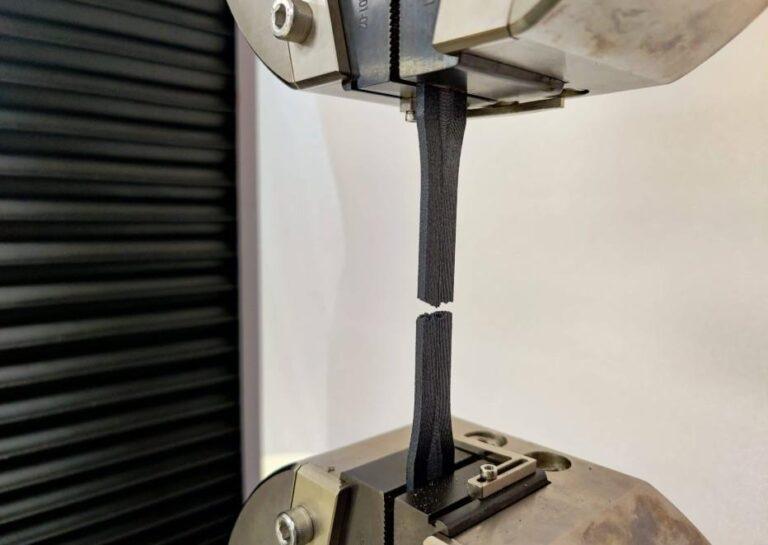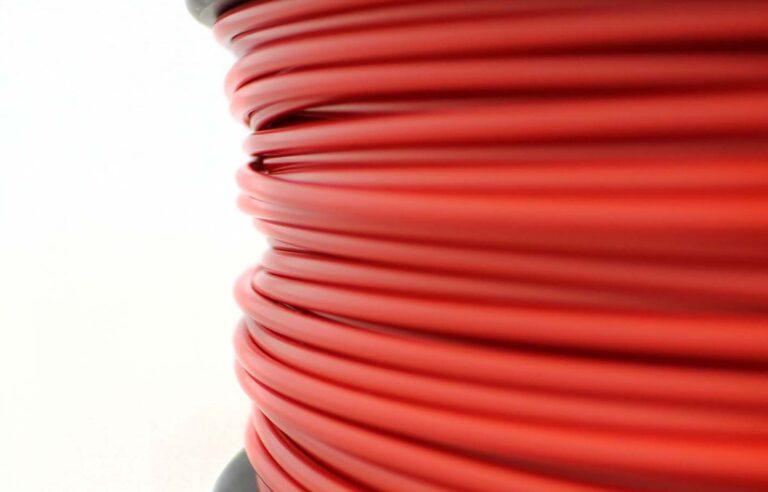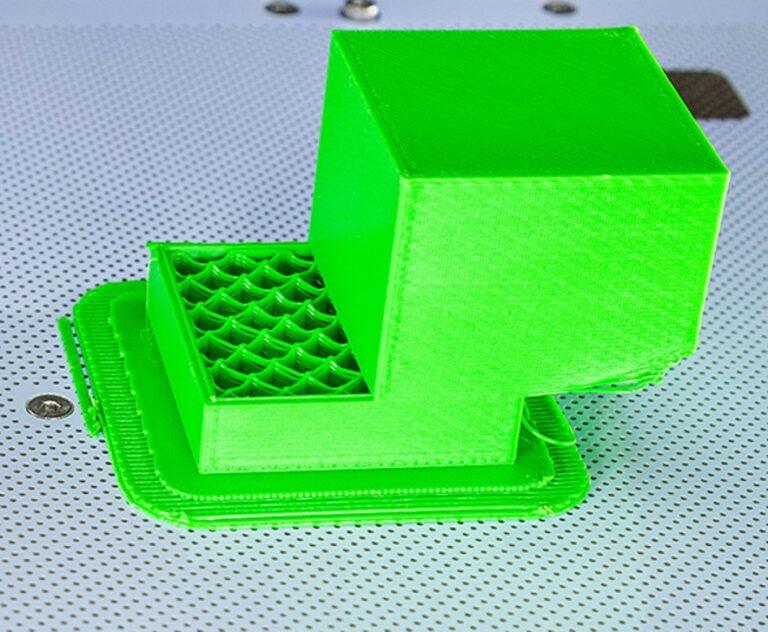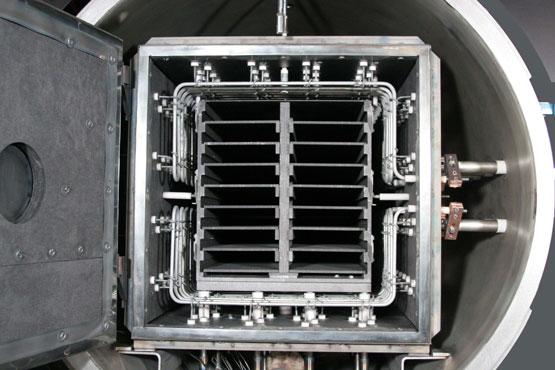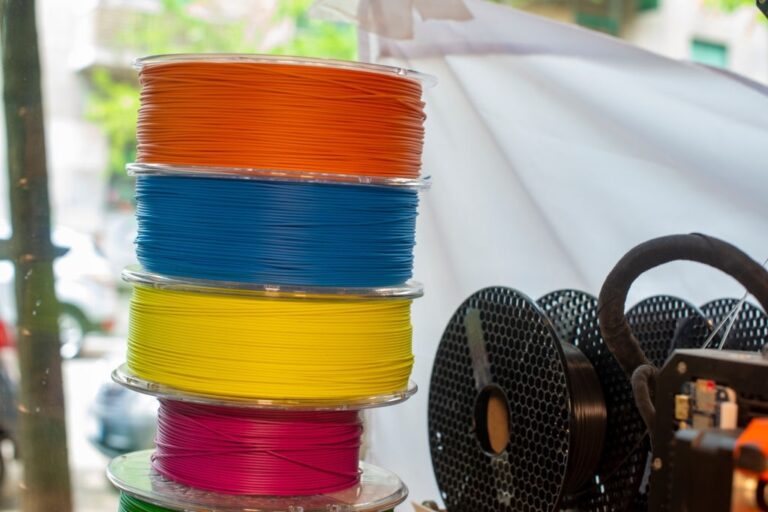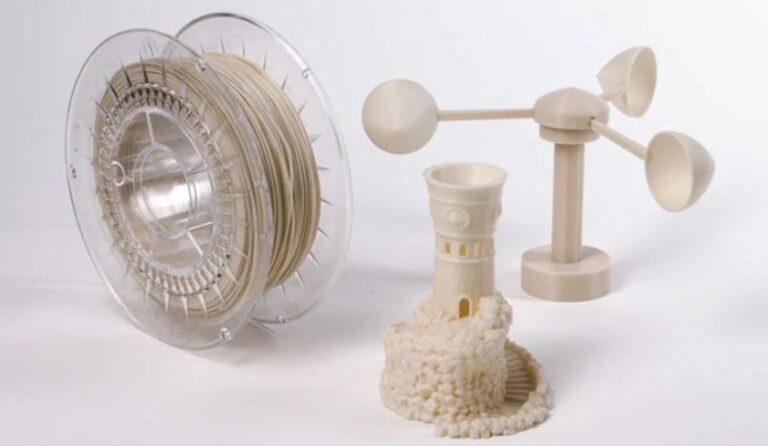CoreXY 3D Printers: Unleashing Creativity and Precision in 3D Printing
Introduction to CoreXY 3D Printers
A CoreXY 3D printer is an innovative type of 3D printer, offering a unique approach to additive manufacturing. It utilizes a cartesian coordinate system, but with a distinct motion mechanism that sets it apart from traditional cartesian printers. In this introduction, we’ll explore the CoreXY 3D printer’s fundamentals, its underlying technology, and what makes it a standout choice for various applications.
One of the key features of a CoreXY 3D printer is its belt-driven system, which allows for precise and simultaneous control of the X and Y axes. This design results in high-speed, accurate, and reliable printing. Moreover, the CoreXY system’s compact and efficient layout reduces the printer’s overall size, making it an attractive option for those with limited workspace.
The CoreXY 3D printer has gained popularity among enthusiasts and professionals alike due to its many advantages. Users appreciate its fast printing speeds, high accuracy, and scalability, which enable the creation of intricate and detailed objects. Additionally, CoreXY printers are known for their flexibility, allowing users to easily customize and upgrade their machines to meet specific needs.
In conclusion, the CoreXY 3D printer is an exciting addition to the world of additive manufacturing, providing users with a high-performance, precise, and adaptable option. As you delve deeper into CoreXY technology, you’ll discover its potential to revolutionize the 3D printing industry and unleash creativity across various fields.
What is CoreXY?
CoreXY is a unique mechanical system specifically designed for 3D printers, CNC machines, and other devices that require precise linear motion control. The CoreXY 3D printer system is based on a cartesian coordinate framework but employs a distinctive belt arrangement and motion mechanism that differentiates it from other cartesian printers. This section will provide an overview of the CoreXY concept, its design principles, and the advantages it offers.
At the heart of the CoreXY system is a set of belts that control the X and Y axes. These belts are interconnected and configured in a way that enables the printer’s head to move with high precision, speed, and accuracy. The CoreXY 3D printer’s belt-driven mechanism minimizes inertia, reducing errors and vibrations during printing. This leads to improved print quality and resolution, especially for intricate designs.
Another advantage of the CoreXY system is its scalability and adaptability. The CoreXY 3D printer can easily accommodate larger build volumes without sacrificing precision, making it a popular choice among professionals and enthusiasts who require flexibility in their projects. Additionally, the efficient use of space in a CoreXY printer allows for a more compact design, making it suitable for limited workspaces.
In summary, CoreXY is a remarkable mechanical system that has revolutionized the 3D printing landscape. Its unique design, combined with the benefits it offers in terms of precision, speed, and scalability, makes the CoreXY 3D printer an appealing choice for a wide range of applications and users.
The evolution of 3D printing technology
The 3D printing technology has come a long way since its inception, with the CoreXY 3D printer being one of the latest advancements in the field. In this section, we will explore the journey of 3D printing, from its early beginnings to the development of the CoreXY system, and how this technology has evolved over time.
Initially, 3D printing was limited to a process called stereolithography, invented in the 1980s. This technology used UV lasers to solidify layers of photopolymer resin, producing 3D objects. Over time, various 3D printing techniques emerged, including Fused Deposition Modeling (FDM), which became the most popular method for home and hobbyist users. FDM uses a heated nozzle to extrude thermoplastic material, layer by layer, to create a 3D object.
The introduction of the CoreXY 3D printer marked a significant milestone in the evolution of 3D printing technology. Developed as an alternative to traditional cartesian and delta printers, CoreXY printers feature a unique belt-driven system that allows for improved precision, speed, and efficiency. These printers have become increasingly popular among both professionals and enthusiasts, thanks to their ability to produce high-quality prints with minimal errors and vibrations.
In conclusion, the CoreXY 3D printer represents a crucial step in the ongoing evolution of 3D printing technology. As advancements continue to be made in materials, software, and hardware, the potential applications and capabilities of CoreXY and other 3D printing systems will undoubtedly expand, leading to even more exciting developments in the world of additive manufacturing.
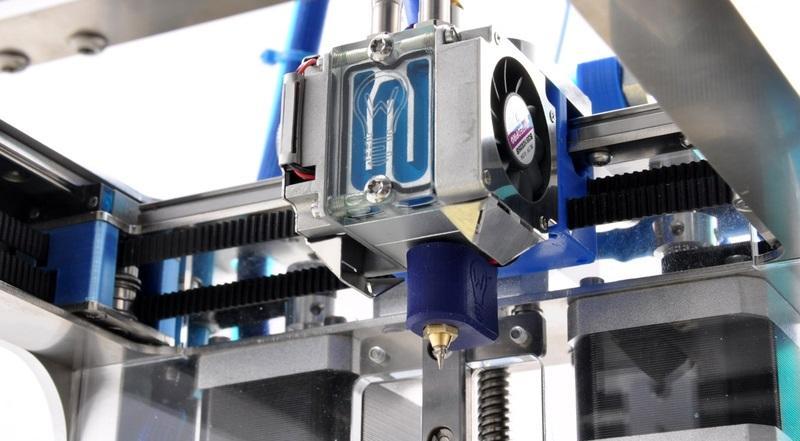
CoreXY Design and Mechanics
Diving into the world of CoreXY systems, it is essential to understand their design principles and mechanical aspects. These factors contribute to their unique performance, which distinguishes them from other 3D printing technologies. In the following sections, we will explore the components and working mechanisms that define the CoreXY system, giving you a comprehensive understanding of this innovative technology.
The CoreXY system and its components
The CoreXY system is built around a unique arrangement of belts and pulleys, which allows for precise control of the print head’s movement in the X and Y axes. In this section, we’ll take a closer look at the key components that constitute the CoreXY system and their roles in its operation.
Firstly, the system features a pair of stationary stepper motors responsible for driving the motion. These motors control the belt tension and movement, ensuring accurate positioning of the print head. The motors are strategically placed to reduce the overall footprint of the machine and minimize inertia, enhancing the system’s efficiency.
Secondly, the CoreXY system relies on a series of pulleys and belts arranged in a specific pattern. This configuration allows the belts to work in tandem, enabling the print head to move in any direction within the XY plane. The precise movement of the print head is crucial for achieving high-resolution prints and intricate designs.
Lastly, linear rails or rods are used to guide the print head’s motion along the X and Y axes. These components ensure smooth, stable movement, preventing wobble and vibrations that could otherwise compromise print quality.
In summary, the CoreXY system’s components work together harmoniously to provide a stable, precise, and efficient 3D printing solution. By understanding the roles and interactions of these components, we can better appreciate the innovative nature of CoreXY technology and its impact on the 3D printing industry.
How CoreXY motion works
To appreciate the advantages of the CoreXY system, it is crucial to understand how its motion mechanism functions. In this section, we will delve into the workings of CoreXY motion, highlighting the principles that set it apart from other 3D printing technologies.
The primary feature of CoreXY motion is the belt configuration, which relies on two parallel belts running in opposite directions. These belts connect to the print head and are driven by two stationary stepper motors, enabling coordinated movement in the X and Y axes. When both motors rotate in the same direction, the print head moves diagonally, while rotation in opposite directions results in horizontal or vertical movement.
Another important aspect of CoreXY motion is the pulley system, which maintains tension and distributes force evenly across the belts. This setup ensures that the print head moves smoothly and accurately, preventing vibrations and errors that could affect print quality. Moreover, the pulley system contributes to the system’s compact design, as it eliminates the need for bulky components found in other 3D printers.
The CoreXY motion mechanism also benefits from its use of linear rails or rods, which guide the print head along the X and Y axes. These components provide additional stability and smoothness to the movement, further enhancing the system’s overall performance and print quality.
In conclusion, CoreXY motion works through a unique combination of belts, pulleys, and linear guides, which together enable precise, stable, and efficient movement. This innovative motion system sets the CoreXY apart from other 3D printers, making it a popular choice for those seeking high-quality prints and intricate designs.
Comparing CoreXY to other 3D printer types (e.g., Cartesian and Delta)
When comparing different types of 3D printers, it is essential to understand their key differences and unique features. In this section, we will compare the CoreXY system to other popular printer types, such as Cartesian and Delta, highlighting their advantages and disadvantages.
Cartesian printers, named after the Cartesian coordinate system, use separate motors for each axis, which allows for straightforward control and calibration. However, this design often results in larger and heavier machines, which can lead to lower print speeds and increased vibrations. In contrast, the CoreXY system utilizes a more compact design with stationary motors and belt-driven movement, which enables faster printing speeds and higher precision.
Delta printers, on the other hand, employ a unique design that features three arms connected to the print head, forming a triangle. These arms move simultaneously to position the print head in the desired location. While Delta printers excel in speed and have a smaller footprint, they can be more complex to calibrate and maintain. Additionally, their print volume tends to be more limited compared to Cartesian and CoreXY printers.
The CoreXY system offers several advantages over both Cartesian and Delta printers. Its compact design results in reduced weight and inertia, which allows for faster and more precise movement. Additionally, the belt-driven mechanism provides more efficient use of space, enabling larger print volumes in a smaller footprint. However, it is worth noting that CoreXY printers can be more challenging to assemble and fine-tune, requiring a deeper understanding of their mechanics.
In conclusion, each 3D printer type has its strengths and weaknesses, with the CoreXY system standing out for its speed, precision, and efficient use of space. When selecting a 3D printer, it is essential to consider these factors and choose the one that best suits your needs and expertise.
Comparing CoreXY to other 3D printer types table
| Feature | CoreXY | Cartesian | Delta |
|---|---|---|---|
| Design | Compact, belt-driven | Separate motors for each axis | Three arms connected to print head |
| Print Speed | Fast | Moderate | Fast |
| Print Volume | Large | Moderate to large | Moderate, limited height |
| Precision | High | Moderate | Moderate to high |
| Calibration & Maintenance | More challenging | Straightforward | Complex |
| Assembly & Fine-tuning | Difficult | Easier | Moderate |
| Footprint | Smaller | Larger | Smaller |
| Stability & Vibration | Less vibration | More vibration | Less vibration |
| Complexity | Higher | Lower | Higher |
Advantages of CoreXY 3D Printers
The numerous printer types each offer a unique set of benefits in the field of 3D printing. The CoreXY system stands apart from the competitors’ thanks to a number of advantages. This section will go through the main benefits of this novel design and how it enhances printing efficiency, accuracy, and user experience. You can decide whether a CoreXY printer is the best option for your 3D printing needs by being aware of these advantages.
Speed and efficiency
One of the most significant advantages of the CoreXY design is its speed and efficiency. With its belt-driven system, the printer can rapidly move the print head across the print bed. Furthermore, the unique configuration of the CoreXY system allows for simultaneous movement of both X and Y axes, which contributes to faster printing times.
Another factor that enhances the efficiency of CoreXY printers is their lighter print head. Since the motors are stationary, only the print head moves, reducing the printer’s inertia. Consequently, CoreXY machines can change directions more quickly and with greater precision, leading to faster print times and better print quality.
In summary, the CoreXY design provides a highly efficient 3D printing experience, thanks to its unique belt-driven system and lighter print head. These factors allow for faster printing times and increased precision, making CoreXY printers a popular choice for those seeking speed and efficiency in their 3D printing projects.
Precision and accuracy
Precision and accuracy are essential aspects of 3D printing, and the CoreXY design excels in both. The belt-driven system and stationary motors allow for more precise control over the print head’s movement. As a result, the printer can achieve incredibly accurate prints with fine details and sharp edges.
Another factor contributing to the precision of CoreXY printers is their reduced vibrations. Since the motors are stationary, they don’t create movement-related vibrations that can affect print quality. This leads to smoother surfaces and improved print quality, especially for intricate designs.
In conclusion, the CoreXY design offers excellent precision and accuracy, thanks to its belt-driven system, stationary motors, and reduced vibrations. These features make it an ideal choice for users looking for high-quality prints with fine details and minimal imperfections.
Scalability and customization
Scalability and customization are significant advantages of the CoreXY design. The modular nature of these printers makes it easy for users to adjust the size of the print area. By simply changing the frame and belt lengths, you can create a custom-sized 3D printer that fits your specific needs.
In addition to scalability, CoreXY printers offer numerous customization options. Their open-source nature encourages a community of enthusiasts to share ideas, modifications, and improvements. This allows users to tailor their machines to specific tasks or materials, enhancing performance and print quality.
To sum up, the CoreXY design provides an unmatched level of scalability and customization. Its modular structure and open-source nature enable users to create the perfect 3D printer for their requirements, ensuring optimal performance and print quality across various projects.
Reduced mechanical complexity
One notable advantage of the CoreXY design is its reduced mechanical complexity. By utilizing a single motor for each axis, the system simplifies the movement process. This not only lowers the chance of mechanical issues but also reduces maintenance requirements.
Another benefit of the CoreXY system is the reduced mass of the moving components. This results in less inertia, enabling faster and more responsive movements. As a result, print times can be reduced, and smoother prints can be achieved.
Overall, the reduced mechanical complexity of the CoreXY design offers numerous benefits, including simplified maintenance and improved print quality. By minimizing the number of moving parts and the mass of the components, CoreXY printers provide a more efficient and reliable 3D printing experience.
Applications of CoreXY 3D Printers
As the 3D printing industry continues to grow, the applications of various printer designs expand as well. Among these designs, CoreXY systems offer unique advantages that make them suitable for numerous fields. In the following paragraphs, we will explore some of these applications and understand the reasons behind their popularity.
Rapid prototyping
CoreXY 3D printers have become a popular choice for rapid prototyping, due to their speed, accuracy, and scalability. With rapid prototyping, innovators can quickly create and test physical models of their ideas, saving both time and resources. For instance, the automotive industry often uses CoreXY printers to efficiently develop and refine new vehicle components.
Manufacturing and production
CoreXY 3D printers are also gaining traction in manufacturing and production, as they provide precise and efficient solutions for creating intricate components. For example, aerospace companies utilize CoreXY 3D printers to produce lightweight, high-strength parts for aircraft, improving overall performance and fuel efficiency.
Medical and dental applications
In medical and dental fields, CoreXY 3D printers play a crucial role in developing patient-specific solutions. For instance, dental professionals use these printers to create customized dental implants and orthodontic devices, ensuring a perfect fit and improved patient comfort.
Art and design
In the realm of art and design, CoreXY 3D printers provide artists with unparalleled creative freedom. Sculptors, for example, can create intricate and highly detailed pieces by leveraging the precision and accuracy offered by these advanced printing technologies.
Tips for Getting Started with CoreXY 3D Printing
Getting started with CoreXY 3D printing requires some preparation and attention to detail. First, make sure you have a solid understanding of how the CoreXY system works. Choose high-quality components and follow assembly instructions carefully. Calibration is key to achieving accurate prints, so take the time to level the bed and fine-tune settings such as extrusion and cooling. Don’t be afraid to experiment with different materials and designs, but start with simple models and work your way up. Join online communities and forums for advice and support, and always be willing to learn and adapt.
Choosing the right CoreXY printer
Choosing the right CoreXY 3D printer can be overwhelming. Consider the build volume, print speed, and cost when making your decision. Look for reviews and ask for recommendations from experienced users. Additionally, consider the availability of replacement parts and technical support. Don’t forget to also think about any additional features or upgrades that you may want in the future. Ultimately, choose a printer that meets your needs and fits within your budget.
Setting up and calibrating your CoreXY printer
Setting up and calibrating a CoreXY printer involves several steps, including assembly, bed leveling, and firmware configuration.
First, assemble the printer according to the manufacturer’s instructions. Ensure that all parts are secured properly and that the frame is square.
Next, level the bed using a leveling sensor or manually. This ensures that the first layer of the print adheres properly to the build surface.
Finally, configure the firmware settings, including steps per millimeter, acceleration, and jerk. These settings determine the printer’s movement and can impact print quality.
It is important to periodically recalibrate the printer to ensure accuracy and quality. This can include checking belt tension, re-leveling the bed, and adjusting firmware settings as needed.
Selecting the best materials for your projects
There are a number of things to take into account when choosing materials for your projects on a CoreXY 3D printer. The first factor is the kind of material, such as PLA, ABS, or PETG, which will have an impact on the final print’s strength and flexibility. The second factor is the color and finish, which could be significant from an aesthetic standpoint. The third factor is the price because different materials might range in cost. It is crucial to take into account the particular specifications of your project, such as temperature or chemical resistance. The ideal solution for your particular needs can be determined by testing various materials and modifying print parameters.
Troubleshooting and maintenance
To ensure optimal performance of your CoreXY 3D printer, troubleshooting, and regular maintenance are essential. Common issues can include layer adhesion problems, clogged nozzles, and belt tension issues. It’s important to regularly clean and maintain your printer, as well as perform calibration checks to ensure accuracy. Troubleshooting can involve checking hardware components and adjusting software settings. Regular maintenance can include lubricating moving parts, replacing worn-out components, and cleaning the build plate. By staying on top of troubleshooting and maintenance, you can ensure your CoreXY 3D printer operates efficiently and produces high-quality prints.
Conclusion: The Future of CoreXY 3D Printing
CoreXY 3D printing technology has brought many advantages, such as speed, precision, scalability, reduced mechanical complexity, and customization. As more and more industries adopt 3D printing, the demand for efficient and accurate printing methods will continue to grow. CoreXY 3D printers are poised to meet this demand, with their unique design and capabilities. As technology advances, we can expect even more innovations in the CoreXY 3D printing field, such as increased build volume, improved software, and new materials. The future of CoreXY 3D printing looks promising, with endless possibilities for applications and advancements.
How to calibrate a CoreXY printer for optimal performance?
- Level the bed
Ensure that the printer bed is level, and all corners are at the same height. This will ensure that the print head moves smoothly and prints correctly.
- Check the belt tension
Verify that the belts are correctly tensioned to prevent the print head from vibrating during movement.
- Calibrate the steps per mm
Adjust the steps per millimeter setting in your firmware to ensure the correct amount of filament is extruded during printing.
- Calibrate the extruder
Fine-tune the extruder settings to ensure the printer extrudes the right amount of filament.
- Adjust the hot end temperature
Set the temperature of the hot end based on the type of filament used to achieve optimal printing results.
- Adjust the bed temperature
Set the temperature of the print bed to the optimal temperature based on the type of filament used for better adhesion.
- Test print
Finally, print a test print to ensure that the printer is calibrated correctly and prints smoothly.
FAQs
CoreXY printers have a unique movement system that separates the X and Y axis motion. This allows for faster and more accurate printing, as well as reduced mechanical complexity.
It is possible to convert some 3D printers to a CoreXY system, but it may require significant modifications and technical knowledge.
CoreXY printers can be more expensive than entry-level 3D printers, but they offer advanced features and superior performance. The cost will depend on the specific model and features.
Some common issues with CoreXY printers include misalignment, belt tension problems, and calibration errors. These can be resolved through proper maintenance and troubleshooting techniques.
Yes, many CoreXY printers are compatible with third-party software such as Simplify3D, Cura, and OctoPrint. It is important to ensure compatibility before installing any new software
Yes, CoreXY printers can be used for a wide range of industrial and commercial applications, including rapid prototyping, product design, and manufacturing. It is important to select the appropriate model and ensure proper calibration for optimal performance.
The maximum print size for a CoreXY printer will depend on the specific model and design. Some models can print objects up to 500mm in height or larger.

